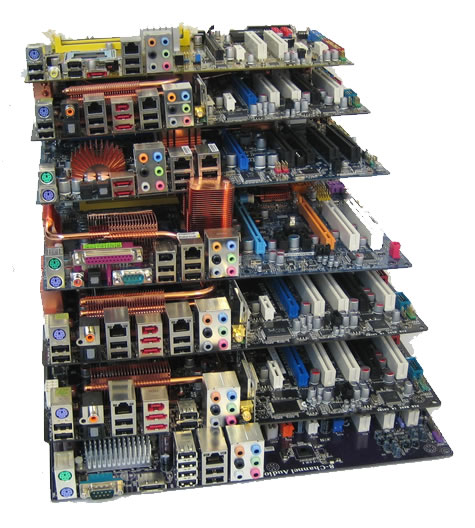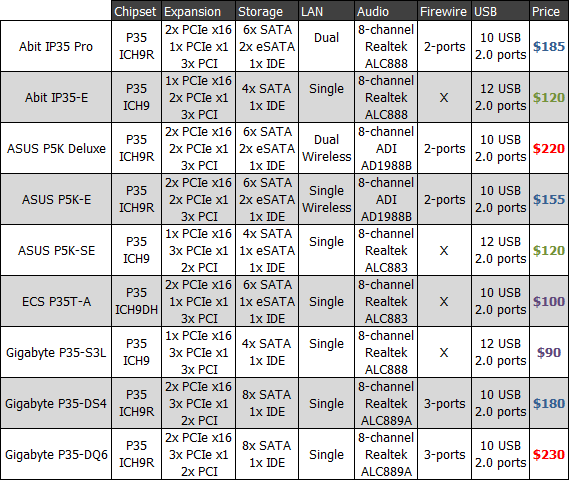
Abit has done an excellent job making sure that the IP35 Pro will not cause any (physical) compatibility issues with other hardware. The six SATA ports are mounted on a 90 degree angle making them easy to access and possible to use even when paired with Crossfire Radeon HD 2900XT graphics cards, for example. The same has been done with the single IDE port, though this is less of a problem for IDE cables.

The four DIMM slots are also clear of the PCI Express x16 area making it possible to add and remove memory with the graphics card(s) installed. The large 24-pin power connector is well placed along the right hand side of the board, towards the middle. In the bottom right hand corner you will notice two little buttons, a yellow and a brown button. The brown button is actually a power button while the yellow is a reset button. Directly below these two buttons you will find the floppy drive connector tucked away.

At the center of the board you will find the P35 northbridge chip which is cooled by a large aluminum heatsink. This heatsink is linked to the southbridge heatsink and the power circuitry heatsink using a single copper heatpipe. This design while quite simple by today's standards works very well. Surprisingly the Abit IP35 Pro only features a 4-phase power design which is more compact and easier to cool.

The I/O panel is not as busy as we would have liked it to be featuring just four of the ten USB 2.0 ports. Furthermore with so much vacant real-estate on the I/O panel why not include the Firewire ports? Instead you get two PS/2 ports, a clear CMOS switch, dual S/PDIF ports, two eSATA ports, six audio jacks, two LAN ports and the aforementioned four USB 2.0 ports.



No comments:
Post a Comment